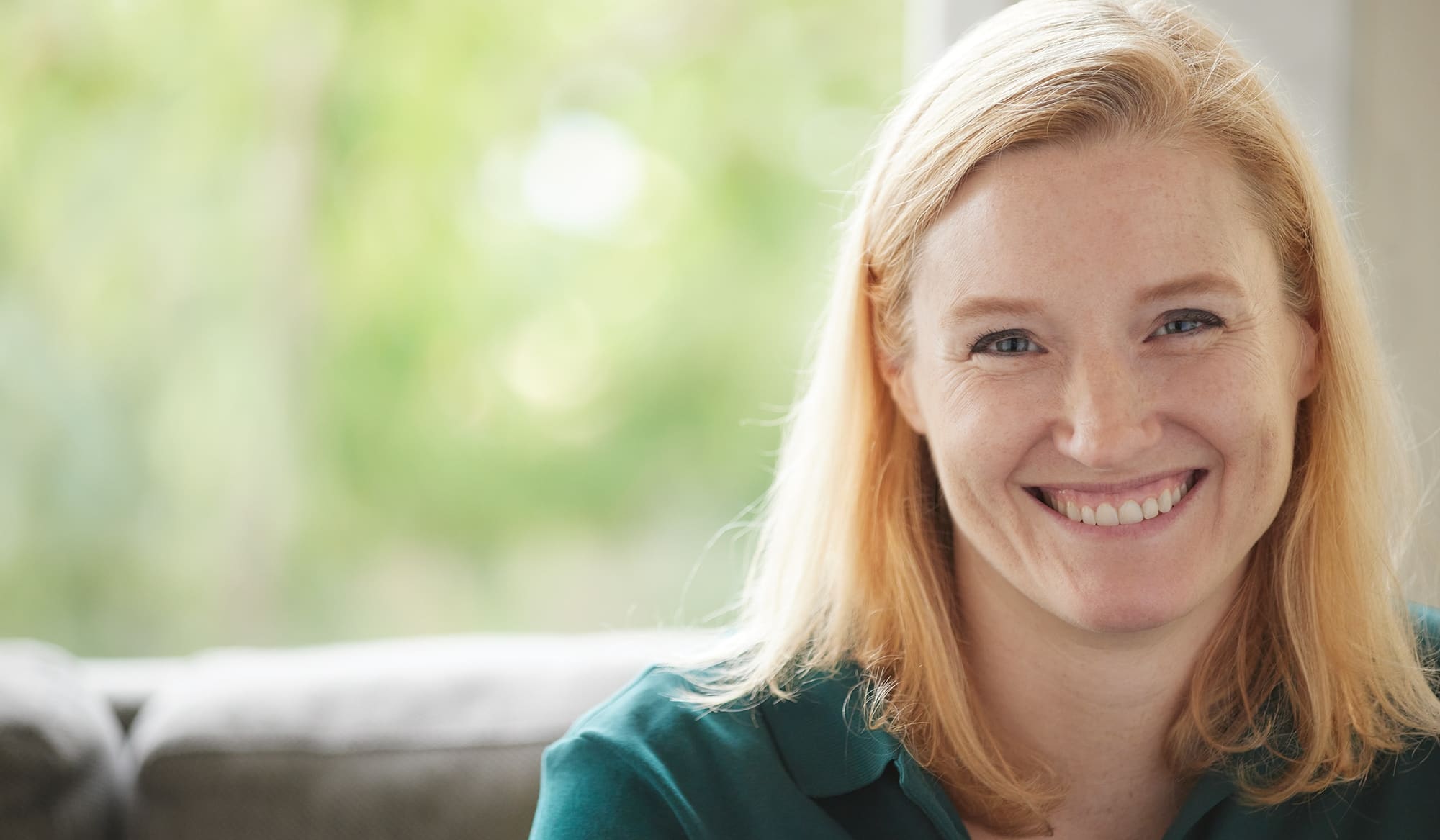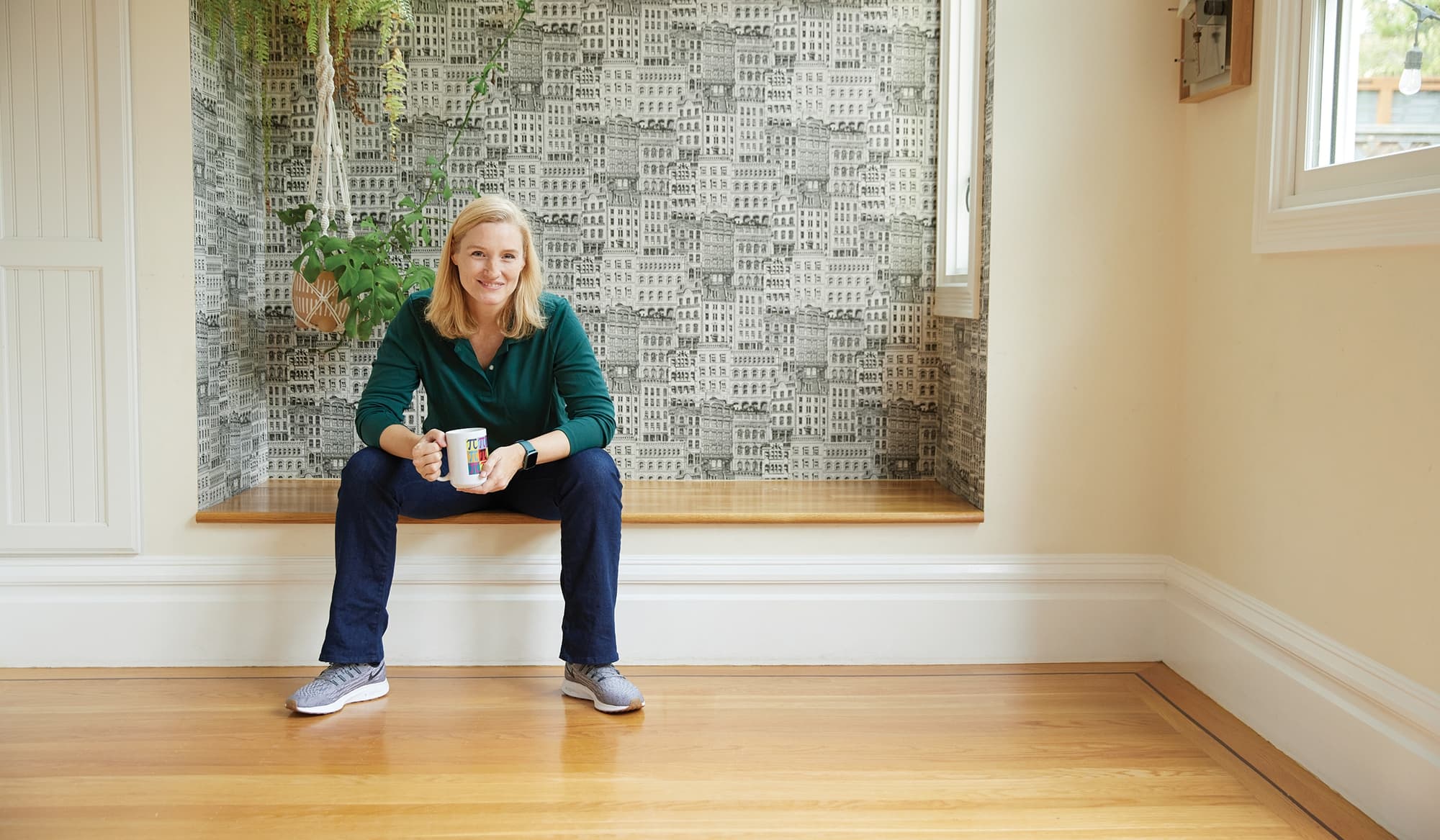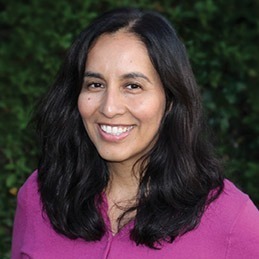Technology for All
Google’s Eve Andersson, MS (BS ’96), on how accessible design can foster both inclusion and innovation
by Marissa Demers

Photography by Mitch Tobias
“Having access to technology can absolutely be life-changing,” Andersson says. “Achieving that high-level impact guides the work that my team and I do.”
Andersson oversees a team of software engineers, user experience designers, and experts in physical and cognitive disabilities. Together with the disability community and product teams across the company, they brainstorm new ways to use and benefit from technology. One of Google’s flagship apps, the Android Accessibility Suite, has been downloaded five billion times and enables users to control their phones using voice commands, eye movements, and even customizable facial gestures. As voice-activated home assistants grow in popularity, Andersson collaborated with Google’s machine learning scientists to refine its algorithms to better understand users with impaired speech.
Inclusive design and accessible technology are not confined to one domain or audience, which is why Andersson’s team offers input on nearly every Google product. This type of integration allows features that are designed for the disability community, such as voice typing, auto-complete, and dark mode, to trickle down to mainstream users. “The accessibility problems of today can lead to the technology breakthroughs of tomorrow,” Andersson wrote on a blog post for Google.
“Having access to technology can absolutely be life-changing. Achieving that high-level impact guides the work that my team and I do.”
A DRUMBEAT FOR CHANGE
When Andersson joined the central accessibility team in 2013, it consisted of Andersson and just five staff members. At the time, they were assigned to fix issues within existing Google products. But Andersson had a more ambitious vision.
She invited members of the disabled community, both inside and outside of Google, to share their user experiences. She also met with other Google groups, linking their goals with hers. Want to score a lucrative government contract? Want to create an app that has mass appeal? Want to avoid bad public relations? Inclusive design and accessible technology can help.
“You cannot just talk to somebody and then assume that they will forever prioritize accessibility,” Andersson says. “You have to keep the drumbeat going.”
She has been keeping a steady beat for inclusive artificial intelligence (AI). She is an advocate of data collection that spans countries, gender, race, and physical abilities. Anything that ignores large swaths of the user population will produce biased results, she says. She has helped incubate some principles and approaches to inclusive AI at Google, and remains peripherally involved in the initiative.
LATE NIGHTS IN THE LAB
Andersson grew up in the Seattle area, one of the country’s first tech hubs and home to Microsoft and Amazon. Early on, Andersson was influenced by her engineer father’s hobbies and learned BASIC (Beginners’ All-purpose Symbolic Instruction Code), an early programming language, before she was a teenager. Andersson and her younger sister visited their grandparents’ house in Nebraska every summer and enjoyed talking with their aunt who used a wheelchair, and playing with their deaf cousins.
When the time came to apply for colleges, Andersson took a tour of Caltech. The campus and its atmosphere were a natural fit for her. “Being at Caltech, it just felt creative,” Andersson says. “And I saw other people who were kind of nerdy like me. I felt right at home immediately.”
Andersson pursued engineering and applied science and, in her free time, competed on the swim team. She also served as president of the Caltech chapter of the Society for Women Engineers and grew the club from five members to 50.
But Andersson’s main passion, and the source of her sleepless nights, was the Undergraduate Computer Science (UGCS) Lab at Earle M. Jorgensen Laboratory. The 1990s were the early years of Web 1.0, and student-run UGCS capitalized on the moment by keeping the lab open 24 hours a day and offering web hosting services. Thrilled by the prospect that the Internet could be used as a tool for communication, Andersson spent hours developing websites and learned HTML, JavaScript, and Perl in the process.
“I was obsessed,” Andersson says. “I would eat microwave popcorn and drink coffee from a vending machine just so I could stay up all night and make random web pages.” In 1994, before LiveJournal or blogging became popular, Andersson coded web pages where she published her creative writing and thoughts as well as puzzles and poetry about pi, her favorite irrational number.
Her work caught the attention of others. After all, less than 3,000 websites existed when she built her first page. Without trying, Andersson had a web development side hustle.
“There were a lot of steps between my time at Caltech and now,” Andersson says. “UGCS helped me recognize my love for software development. Without it, I probably would have gone on to a career in mechanical engineering.”

“I used to think that having a tech job meant I would be staring at the computer all day by myself. Instead, I get to help change the world.”
A NEW CAREER PATH
Today, Andersson has a dream job that she never designed or planned. Before joining the accessibility team, Andersson cofounded an open-source software company, helped launch a technology-focused university, and worked abroad in Guatemala City, Buenos Aires, and London.
Then, a chance encounter with a West Coast colleague at Google’s New York City cafeteria changed her career path. He mentioned the company was establishing a central accessibility team and was looking for someone with product management experience to fill the role. She did not meet some of the requirements for the job but leaned into her startup experience and passion for the group’s mission.
“As soon as I learned about the position, I just knew I had to be a part of it,” she says. “Leveling the playing field is one of my fundamental beliefs and this was an opportunity to do that in a really meaningful way.”
NAVIGATING THE PHYSICAL WORLD
Andersson is encouraged by the progress made in computer vision, robotics, and the Internet of Things, a network of devices that “talk” to each other. These developments make possible a new frontier in accessible technology—helping people with disabilities better navigate the physical world.
Andersson’s team and colleagues across the company have begun to make strides in this realm. Google Maps now lists wheelchair-accessible streets and public transit stops. Another app helps people with low vision or blindness identify objects in a room. And while Andersson cannot disclose projects in Google’s pipeline, other researchers outside Google have been working on robotic wheelchairs and wearable devices that can communicate with smart cities.
“So much can be done with real-world accessibility and I get to be part of it,” Andersson says. “I used to think that having a tech job meant I would be staring at the computer all day by myself. Instead, I get to help change the world.”


Marisa Demers is a freelance writer who got her start covering wildfires and breaking news for newspapers. She also worked for Caltech and was most recently an assistant director for the Caltech Associates. A San Gabriel Valley native, she has enjoyed following Caltech’s scientific breakthroughs and student pranks over the years. You can read more of her writing on widestletter.com and follow her on Twitter at @WidestLetter.